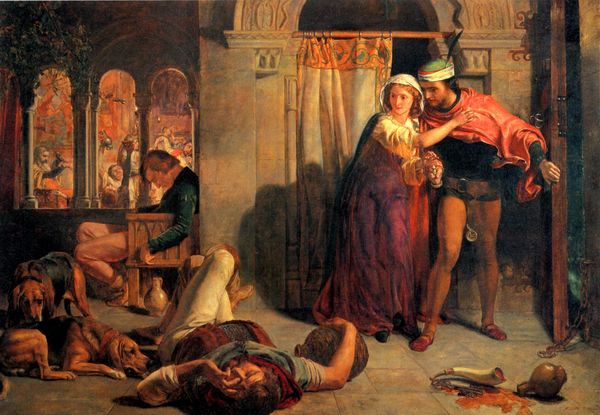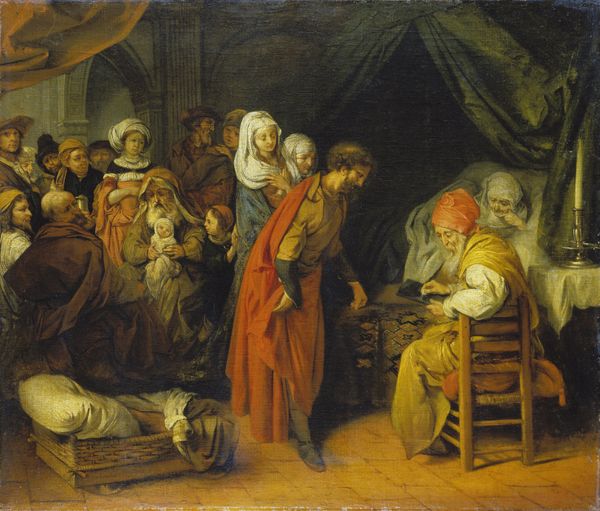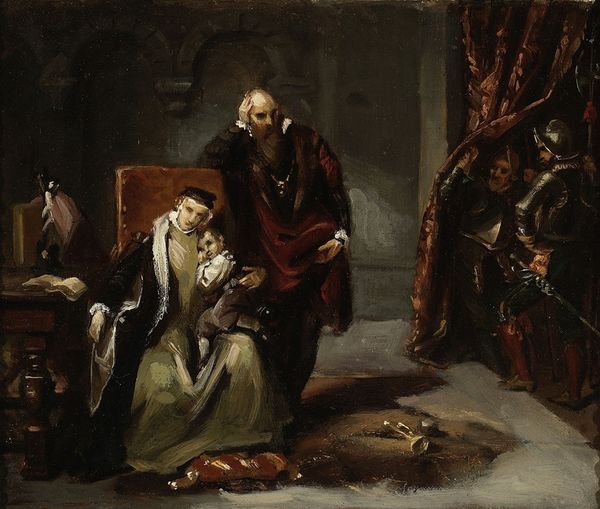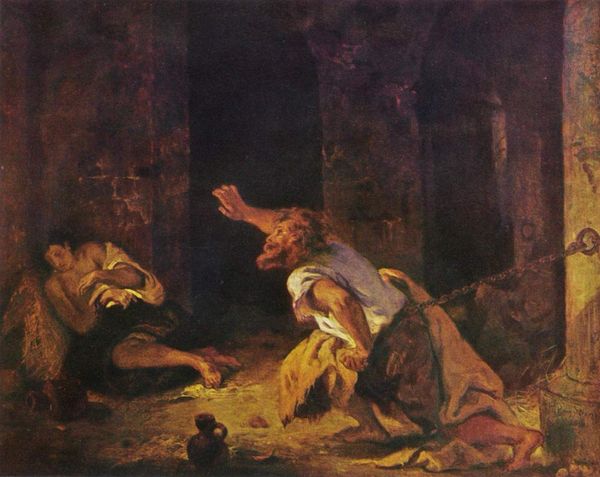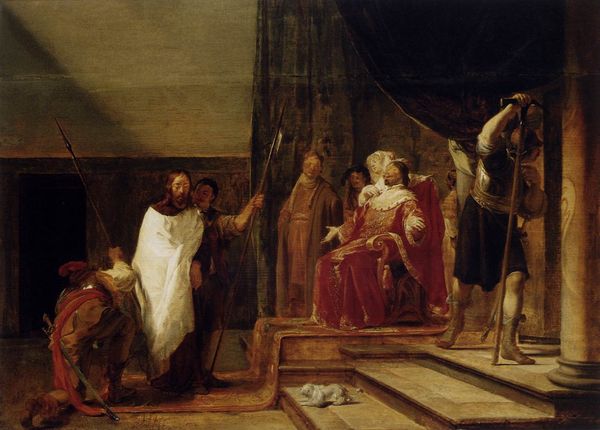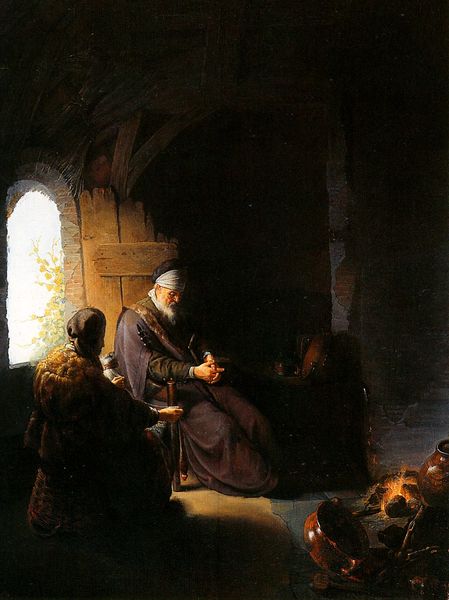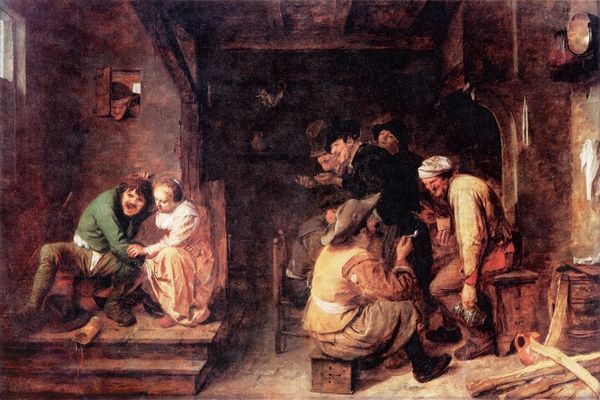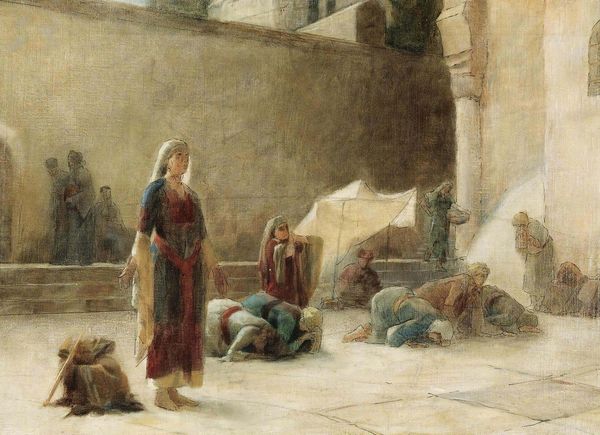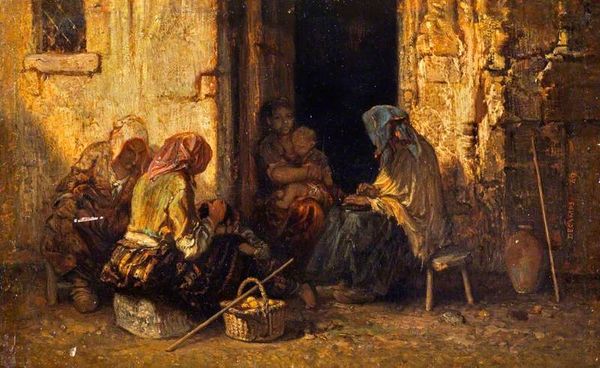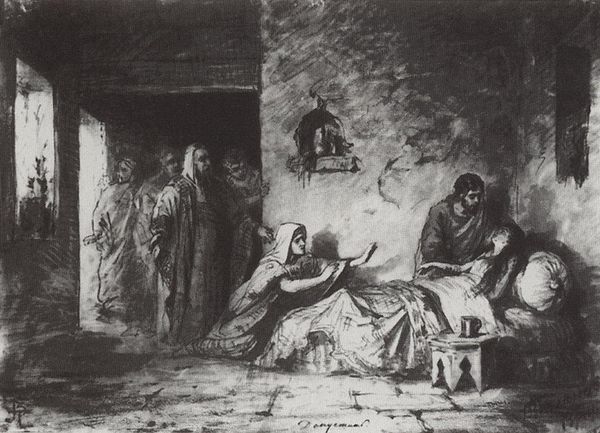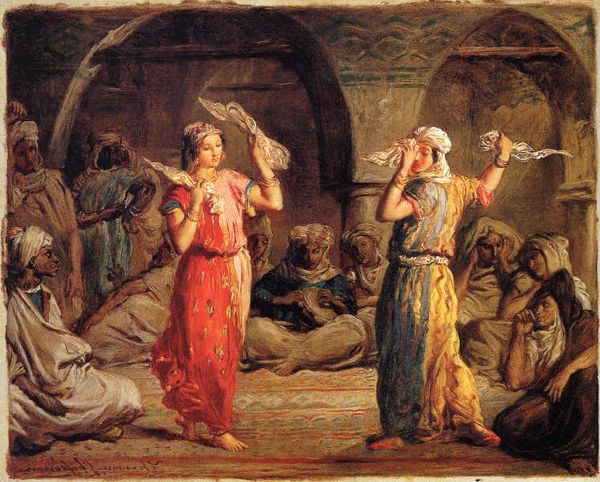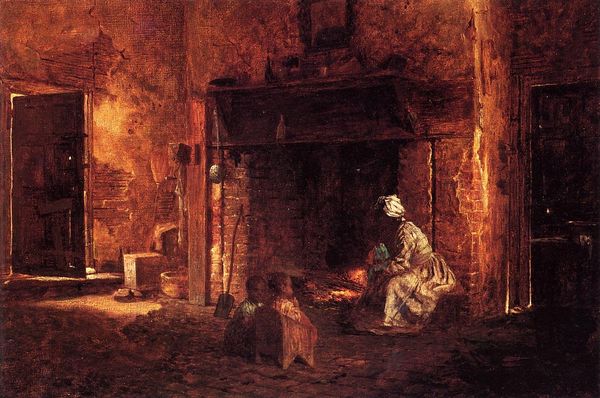
oil-paint
#
portrait
#
dutch-golden-age
#
oil-paint
#
furniture
#
oil painting
#
genre-painting
Dimensions: 40 x 53 cm
Copyright: Public domain
Editor: Here we have Pieter de Hooch's "The Morning Toilet of a Young Man," painted in 1656 using oil paints. The composition strikes me as rather domestic. A maid is fixing a bed as a man sits slumped in a chair. What's your take on this piece? Curator: For me, this painting screams labor. Think about the production of the pigments used to create this scene – the grinding, mixing, and the specific sourcing of materials from various locations. Even the canvas preparation represents considerable effort. Editor: That's something I hadn't considered, actually. How do the materials speak to the social context? Curator: Well, the opulence suggested by the setting, even if subtly rendered, is a direct result of exploitative economic structures of the time. De Hooch isn’t just depicting a morning routine; he's showing us the end product of a system where certain individuals had the leisure for 'morning toilets' because of the labor of others. Editor: So the painting is unintentionally revealing a disparity? Curator: I wouldn't say unintentional. Genre paintings like this gained popularity among the merchant class. By displaying scenes of everyday life, they are celebrating, and perhaps even legitimizing, their lifestyle made possible by these systems. It's consumerism displayed on a canvas. Consider what kinds of paints would have been available and affordable at the time. That directly impacts what could and couldn't be shown. Editor: It is fascinating to think about the materiality encoding a complex history. Thanks, I see it so differently now. Curator: And seeing it that way reveals how art always participates in a larger economic and social reality, a system of production and consumption that's critical to understand.
Comments
No comments
Be the first to comment and join the conversation on the ultimate creative platform.
